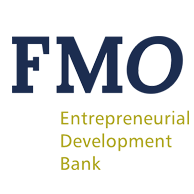


Approximately 35% of Bolivians live below the national poverty line, according to World Bank data.
Poverty is more concentrated in rural areas, affecting women and indigenous communities in particular. Most are dependent on subsistence farming and have only very limited access to markets and financial services. By increasing their access to finance, alongside technology and enhanced agricultural practices, these excluded communities can increase productivity and income, as well as enjoy improved household welfare.
In 2013, FMO, via MASSIF the financial inclusion fund, provided USD 3 million in debt and USD 2 million in equity[1] to the Bolivian lender, Sembrar Sartawi, to provide microloans to people living in rural areas. Sartawi was at the time launching the triangle business model through its three branches, providing microloans alongside technical assistance and market access.
Impact of microfinance on poverty reduction is highly debated
The impact of microfinance on poverty reduction is highly debated among academic researchers, so FMO contracted Groningen University to evaluate the outcomes of FMO’s investment, with a particular focus on testing the impact of microloans targeted at rural areas and combined with technical assistance and market access.
The Groningen research team conducted a rigorously designed impact evaluation between 2015 and 2019, looking first at Sartawi’s microloans, followed by the impact when these are combined with technical assistance and market access. The study also looked into financial and ESG additionality, as well as any catalytic effects of FMO’s investment on Sartawi.
Sartawi currently supports some 30.000 clients, of which more than half are women. 45% work only with Sartawi, and almost half live in rural areas. Some 33.5% of Sartawi’s clients live on less than the international poverty line of USD 3.20 a day.
In a few branches, Sartawi offers its triangle business model to dairy farmers, and this includes market access and technical assistance to improve their production processes and animal husbandry practices. The technical assistance includes for instance veterinarian services, advice on nutrition, breeding, and forage production for dairy farmers. These two services are financed by Sartawi’s business model, with no extra cost for the end beneficiaries. To obtain the Sartawi loan, the dairy farmers sign a contract with one of two milk-buying companies, which commits them to daily milk deliveries. These loans are low risk since the farmers receive bi-weekly payments from the milk companies, and Sartawi collects the repayments directly from those companies rather than from the farmers.

Sartawi’s risks were reduced because the loan was in local currency
The evaluation concluded that MASSIF’s investment was highly additional because it was a unique offer in the market. It combined debt and equity funding, it was long term, the interest rate was reasonable, and Sartawi’s risks were reduced because the loan was in local currency. Furthermore, MASSIF’s investment carried Sartawi through a challenging period when the company was obtaining the banking license.
MASSIF’s investment was also crucial for the implementation of Sartawi’s triangle business model, as well as enabling it to expand credit in the agricultural sector. It also provided non-financial additionality, as FMO staff worked closely with Sartawi to implement corporate governance standards and provided guidance on the topic to the board of directors. The catalytic effects are more difficult to capture and quantify, but according to Sartawi, the MASSIF investment strengthened other funders’ trust in the lender, and it has been able to attract new funding sources.
The impact evaluation on end-borrowers consisted of two parts: one focused solely on the impact of the microloan, and the other on the microloan's impact when combined with technical assistance and market access.
The first part showed that the impact of Sartawi's microloan on household income is greater in areas that are more impoverished and have fewer lenders. Significantly, in communities with few other lenders, and when people only received the microloan, the agricultural income decreased by USD 36 per month, while revenues from other businesses increased by about USD 85 monthly. This suggests that without efforts to increase agricultural productivity, the farmers may prefer to increase their income from non-agricultural businesses.
However, the second part of the study showed that this trend is reversed when the microloan is combined with technical assistance and market access. In this scenario, they found an increase of 11% in daily milk production and a conservatively estimated 16% increase in income. The productivity gains raise the monthly revenue from USD 260 to USD 300 for farmers allowing them to increase household expenses or reinvest in dairy production. The triangle model is effective in this setting by providing income growth opportunities without abandoning agricultural production.
The evaluation's findings provide robust scientific evidence to FMO on the relevance of non-financial services for making microcredit more productive and impactful for end-borrowers; thereby also helping to close a knowledge gap in the microfinance research community. The research on Sartawi’s impact has also been published in the Journal of Development Studies, see the publication here.

The evaluation recommended that Sartawi should expand its model in selected regions and with suitable agencies. It also suggested that Sartawi should listen to its clients’ need for more timely delivery of credit and the opening of emergency lines, while also improving its engagement with companies providing market access for farmers.
With regard to FMO and other impact investors, the study recommended supporting the expansion of the triangle model to more rural populations across Bolivia with limited access to finance.
Sartawi will be able to expand the triangle model by keeping its core business commercially viable and, more importantly, expanding its client base. In this context, FMO will provide a new loan focusing on rural farmers living in regions with high-risk of adverse climate events, which will help the company grow and deepen the impact in rural areas. The funding will be provided by the Dutch Fund for Climate and Development (DFCD). Finally, following the study's recommendations, Sartawi has already identified the agencies where its triangle model could be used effectively.